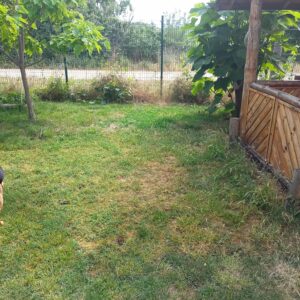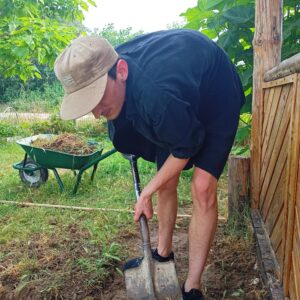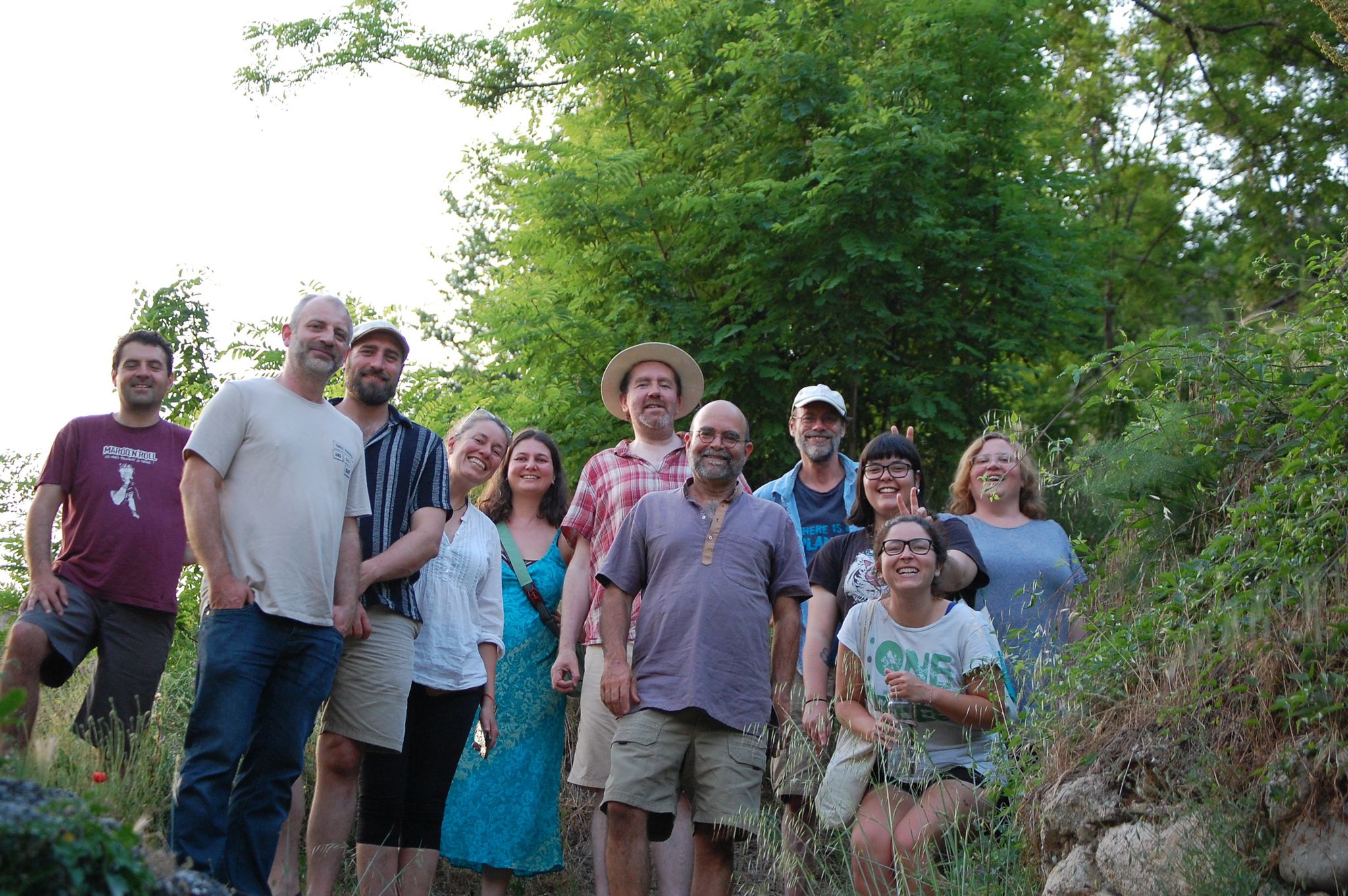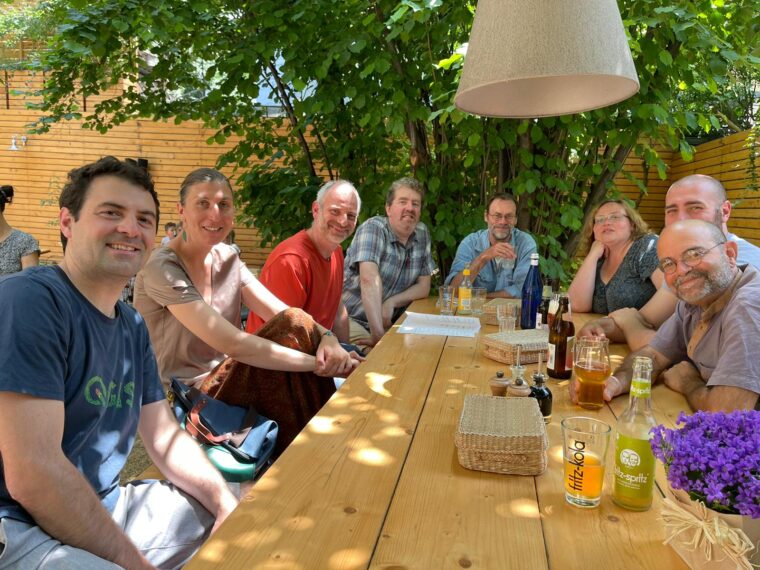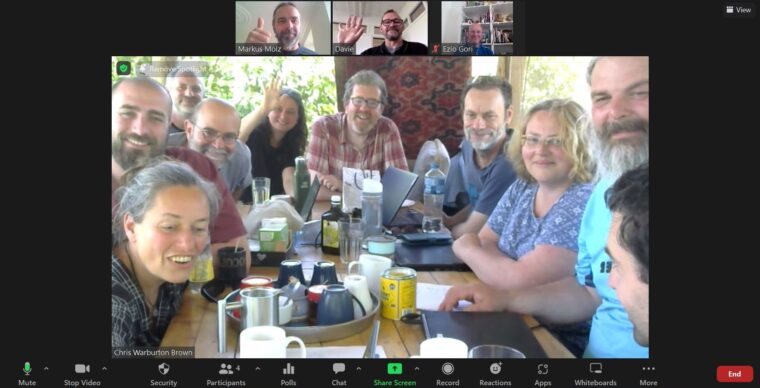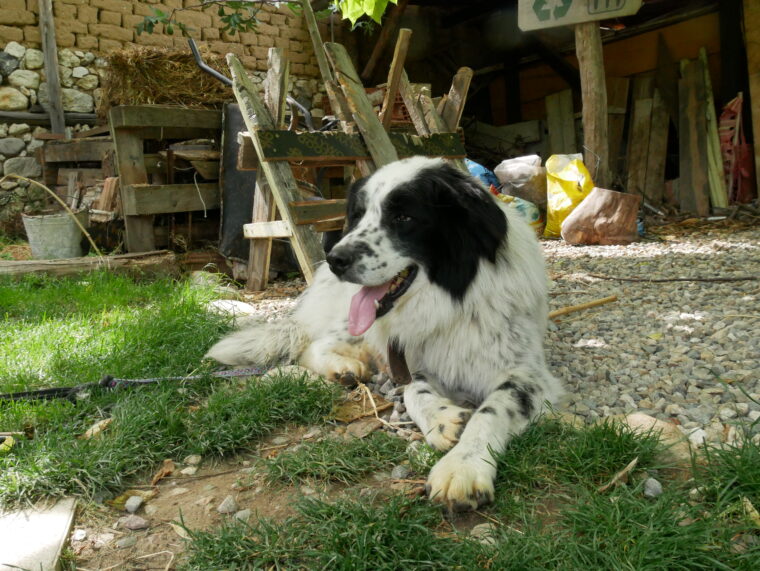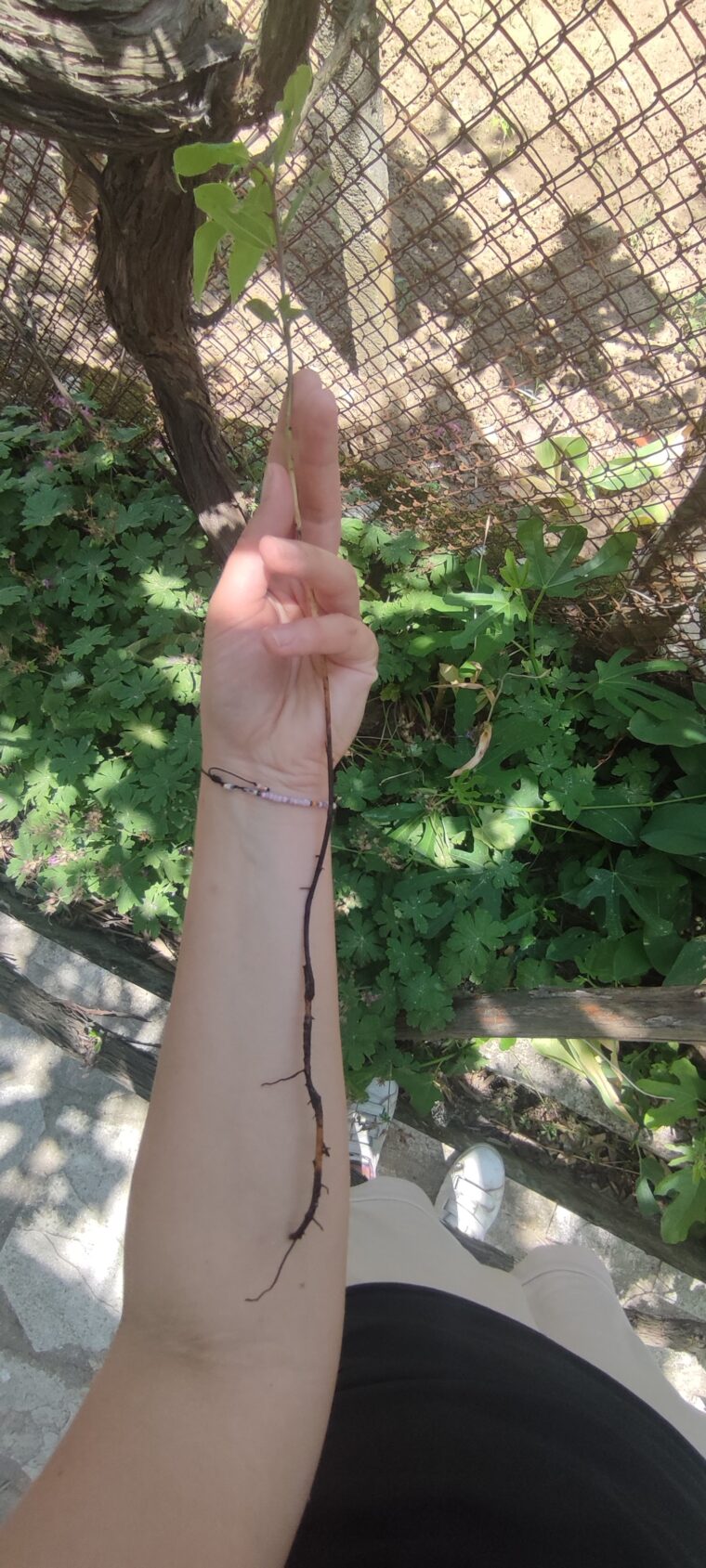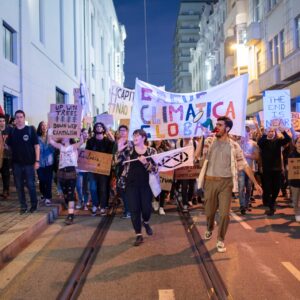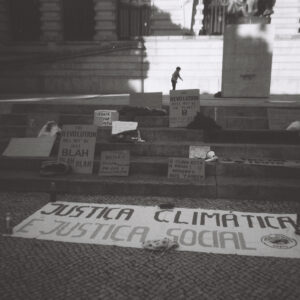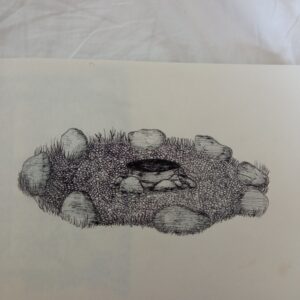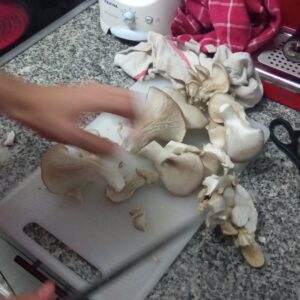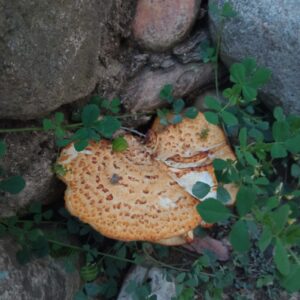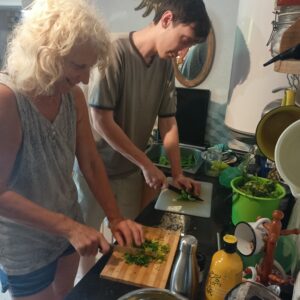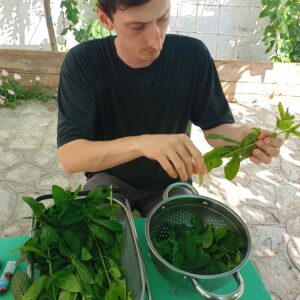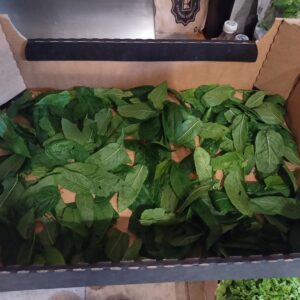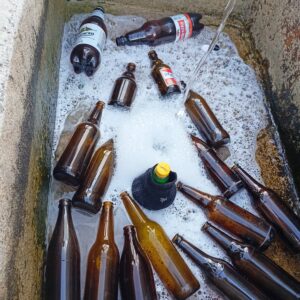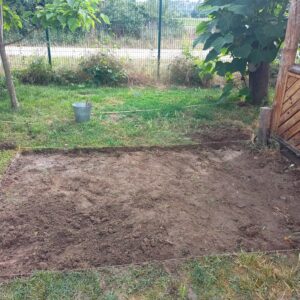Vyara:
Hello, hello!
End of May, end of week eight, at least for me! This week Green School Village hosted the iACT Transnational Partners Meeting, where we had the chance to network and share ideas with some very interesting people from all over Europe. Organizations that took part in the events and which are part of iACT are:
- the Faculty of Science part of the University of Lisbon, Portugal (https://www.ulisboa.pt/en/unidade-organica/faculty-sciences);
- Cloughjordan Eco-village, Ireland (https://www.thevillage.ie/);
- The British Permaculture Association, United Kingdom (https://www.permaculture.org.uk/);
- The Danish Permaculture Association, Denmark (https://permakultur-danmark.dk/en/);
- The Centre for Ecological Learning, Luxembourg (https://www.cell.lu/);
- Laboratorio Sicilia 2030, Italy (https://www.labsicilia2030.org/).
The iACT team
Cat from the Danish Permaculture Association made a lovely video with pictures from the meeting and bird songs she recorded in Kamping Kromidovo, check it out! Thank you Cat 🙂
The whole team, online and offline 🙂
As permaculture is all about creating and utilizing a self-sufficient eco system I was curious to hear opinions from people with different backgrounds on how to create an efficient and esthetically pleasing homestead.
Creating a homestead has been on my mind for quite some time now, even before I started my permaculture journey. I am determined to create it myself to prove to myself that I can overcome any obstacle and to challenge myself to try and experience new things. I have house-sat and dog-sat alone before, I enjoy my own company, but like every human being sometimes I feel lonely and crave the company of another being. For me, the perfect companion would be a dog, as they are friendly, active and entertaining (!) companions. If you are thinking of getting one this is the moment to encourage you to ‘’adopt not shop’’. I am pro adopting stray dogs and placing them in a home where they are welcomed and loved. However, in a lot of cases the strays are badly behaved, not because they are bad, but because they were treated badly and were not given enough attention. I just want to mention here that one of the things John and Sara (the owners of the Kamping Kromidovo) are doing for the local stray dogs is trying to rehabilitate them and teach them ‘’healthy’’ habits, like walking on leads and simple commands.
One of the six dogs that John and Sara have and one that needs a loving home is Belcho. Meet Belcho:
Quick language lesson, kuche means dog in Bulgarian 🙂
Despite his size, Belcho is a puppy, less than two years old. John and Sara were seeing him occasionally around the village and on their daily walks, but it wasn’t until people from the campsite started feeding him that he started hanging around there more often. Belcho is a big and friendly creature, John and Sara think that he is semi-domesticated, but he definitely needs training, attention and discipline. I have never had a dog before and I jumped to the opportunity to train him so he can be a little bit more ‘’manageable’’. This is an exercise in patience for both of us.
Just FYI the video is quite long, you can skip to the grooming part as Belcho is quite cute there 😀 He was very tired from the walk and very very tired.
I want to use this space to tell you more about the place of pets, more specifically dogs, in the permaculture universe. People get dogs for different reasons, some for companionship and some for help with herding and protecting their livestock. My experience with herd dogs is mainly with border collies, from back in the days when I was working on sheep farms in Iceland. This is one of the areas where dogs can exercise their skills, but I want to focus more on pet dogs, as most people decide to get one once they move to the countryside and start building their homestead.
If your dog spends most of his/her* time in the garden, they should be included in the map of the property. Dogs have favorite places, holes they dig out and lay in, consider those places and don`t plant on them as they will be vandalized again and again. If you lack space, a good idea is to have hanging baskets, they are ascetically pleasing as well.
*Although we refer to pets as ‘’it’’, I don`t feel comfortable doing it, so I will refer to them as ‘’he/she’’.
One of the main problems John and Sara have with their dogs is that they like to play and jump in the planting spaces. You might have to consider fencing your grow beds, dogs are not as elegant as cats are, they break and destroy. Appropriate materials for fencing can be willow, bamboo or tree pruning, reusing old or somewhat waste materials for this is also a good choice. A good idea is to learn natural weaving techniques not only to protect your veggies, but also to learn a new skill, which is both useful and pleasant.
Try training your dog when it is still a puppy to not go into those areas, it might prove to be more effective, as the dog will decide to respect the barrier instead of keep trying to break it again and again.
In their natural environment, dogs are predators and as such protect your property from nabbing furry pests.
I am pro composting dog poo, just like human waste it should be composted in the humanure system or hot compost (the temperature needs to be above 60C to kill any pathogens in the waste). In case you have a standard compost, prepare to sacrifice a bucket for this job. In order for the pathogens to be exterminated you need to provide a nitrogen and carbon-rich environment, adding grass clippings, weeds, sawdust and cardboard will achieve that. This compost can be used after a year or so on ornamental plants and fruit trees. I found this interesting video on the topic:
Rich in nitrogen, dog pee also fertilizes trees, which are often dogs` favorite places. It is not a coincidence that they love to pee on trees.
Needless to say, you need to wash your fruit and veggies before consumption, you can be as controlling as possible with your pet, but there’ll always be the occasional pee or poo in the garden.
Side note: while I was researching for this article I came across this interesting read: https://www.lowtechmagazine.com/2010/09/recycling-animal-and-human-dung-is-the-key-to-sustainable-farming.html
You can use the dog’s love for digging to your advantage and train him to dig where and when you want him to in exchange for treats. Try teaching him how to bring small tools and materials. Observe not only the environment around your dog, but the dog itself. Analyse their needs and wants and make the garden interesting enough for him/her.
Not to mention the many uses that dog fur can be put to! Birds love it for their nests, you can knit sweaters and have your bff ON you (although you might need a LOT of fur) or stuff pillows with it, it could be used as pest repellent as it keeps the smell of your dogs for a long time, you can be as creative as you can!
P.S. Did you know that because of its absorbency dog hair and human hair is used for collecting oil from the water when there is an oil spill? Me neither.
Close friends reminded me the other day that ‘’a dog is not just for Christmas’’, so if you are considering having one think about whether you will have the space, resources and the time for one, as it is a big responsibility.
I would recommend you an interesting article about the role of animals in the permaculture systems I came across while I was researching the topic: https://verityevans.medium.com/pets-in-a-permaculture-system-70a911b49c3b
Another highlight of my week was this guy:
Young Laurel Tree. Coming across him was pure luck, usually people take cuttings, but I dug out a young plant with the root. This makes the propagation process much faster, and stress-free, for the plant (and for me). So, my plan is to help him grow big enough to plant him outside. I noticed that here, in the North of Bulgaria there are massive Laurel Trees and I would like to try growing one of them in the North of Bulgaria. I have my doubts, but I am willing to try.
Thanks to everybody who is reading our blog posts! P.S. John I know you are our biggest fan, thank you for that 😊
Filipa:
Êro, êro! Welcome to another week of us sharing our experiences as volunteers!
As Vyara mentioned, this week we had the pleasure to meet some of the interesting and fascinating people that took part in the iACT Transnational Partners Meeting. It was really a fulfilling experience for me, especially since I had the chance to network and chat about all the topics that concern me with mentors from all over Europe. Some of them have been doing this since the ’80s and ’90s, which gave me hope and a whole lot of renewed motivation to keep up my activist work, even though I am currently 3200km from my grassroots and climate justice movements, it’s possible to continue helping the revolution in a remote position.


Examples of recycled materials used in strikes by the Portuguese grassroots movements
Last week, as you may have seen, I did this short video of the good practices of Chiflik Livadi, founded by Philip Harmandjiev. I must confess that, although I struggled a little bit to upload the video on Youtube, having the chance to just practice one of my hobbies and skills gave me the impulse to focus on another hobby of mine: drawing/illustration. I did 3 years of visual arts education in high school, and I think that I can quite master everything related to that but having chosen other areas of interest in my bachelor’s and master’s degrees, I haven’t taken much time to just perfect my illustration skills. I believe that society has this generalised idea that art is really expensive, but, even more than that, I consider it to be extremely wasteful. That being said, it was this motive that made me pursue International Relations and Environmental Management, in order to fight the problem and not be part of it.
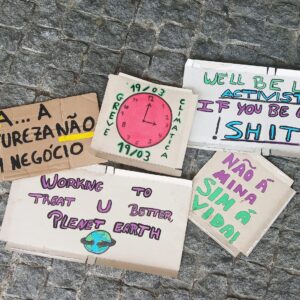
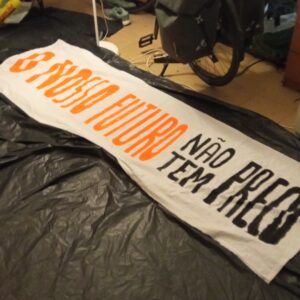
More examples of my art with recycled materials + a bonus analog photo of one of the strikes
Throughout the years, I have accumulated quite a lot of art materials and I try to use everything that I have before buying something new, which is quite exhausting but doable! Additionally, and because I try to live this sustainable and minimal life, I decided to come to Bulgaria with only the essentials: bamboo paper, a second-hand black ink pen, pencil, rubber, and my second-hand watercolours. Every second-hand store has a lot of office and school supplies, since we tend to accumulate those in our houses, so I really suggest to you to check these places before buying anything new.
Since Camping Kromidovo is on its way to potentially becoming a LAND center, I wanted to make something special that could incorporate their good practices, so the vision of creating a booklet with original illustrations of some of the spaces that they have was the perfect opportunity to just combine everything! I spend quite some time just drafting and because I only have a pen with me (trying to keep everything minimal), I already have 3 drawings finished that I would love to share with you. Next week, I am going to try to finish the rest so I can show you the final result 😊

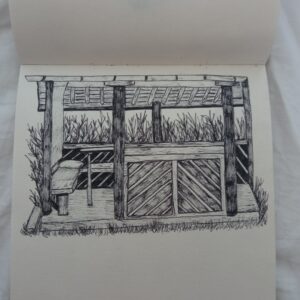
Drawings of the gazebo, the outside area and the fire pit to be included in the booklet
Additionally, during this week, we went to Melnik with the team from the iACT Transnational Partners Meeting, and I saw two fungi babies that I wanted to share with you! I don’t think I have ever taken the time to explain or explore my fungi obsession in the blog, but I became really invested in it over the past two years. When I was younger, I always went to the forest just beside my house in the village to see the mushrooms growing and changing with the seasons, even though I was never brave enough to forage them. Fast forward to two years ago, when I was taking part in all these amazing Youth Exchanges and Training Courses about sustainable living and permaculture, I decided to enrol in a course about mushroom growing and identification and finally made the decision of growing my own oyster mushrooms along with my roommates 😊Now I am capable of identifying the baby fungi that I see in the wild, but even though I have a bit of knowledge, I don’t forage unless I’m 100% certain of its properties.
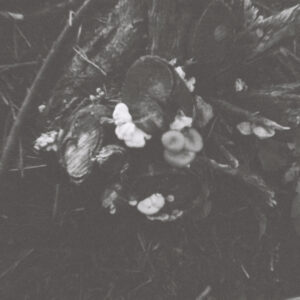
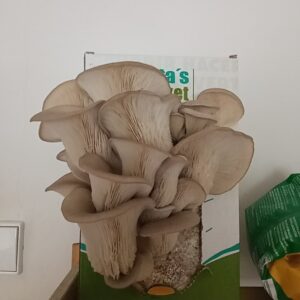
Analog photo of the mushrooms in my hometown, my oyster mushroom production and me and my roommates cooking them 🙂
I was able to identify the mushrooms in Melnik, but of course I had to double-check when I got home. The problem with fungi is that there are so many different species that are quite similiar, so you shouldn’t take your first hint as granted. As you can see in the attached photos, the first one is Auricularia Mesenterica, which you can normally find in the wood of dead trees, and, even less frequently, in alive trees. It’s really similar to Turkey Tail (trametes versicolor), but it’s not edible when it’s found like this (mature), although young specimens are considered edible, in most places, these fungi tend to accumulate high levels of metals depending on the surrounding environment. The second one, Cerioporus squamosus, is a fungi that causes white rot in the wood of alive trees, being considered a parasite, or in dead trees, being a decomposer. It has a lot of ecological importance, since it breaks down the wood and just like Auricularia Mesenterica, when they’re young and soft, these can be succulent, but when they get older, they’re tough and inedible, similar to chickens of the woods, but unlike chickens, they are un-chewable, no matter the age. (Source: https://ultimate-mushroom.com/edible/49-cerioporus-squamosus.html)
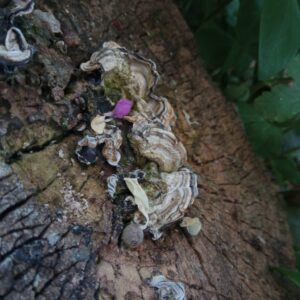
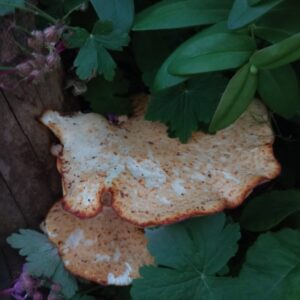
Auricularia Mesenterica (1st photo) and Cerioporus squamosus (2nd and 3rd photos)
To finalise my part of the blog, I would love to share a video with you that I watched the other day and thought would be interesting 🙂 Thank you all for reading our blog and stay tuned for the next adventures 🙂
Ewan here, welcome back to the blog :). This week was an exciting one, as people came from all around Europe to take part in a permaculture work meeting here in southwest Bulgaria. That meant that lots of preparations were in order, to make sure their stay here will be as good as possible. Monday was, therefore, a day mainly of preparations. We had to plan every meal that the team were going to have, make a list, and then head out to the nearest town. The market was the first point of call, as the produce from here is always nicer and cheaper. Luckily for us, Monday is market day in Sandanski, so we gathered all that we could from there before heading off to the supermarket to get the remaining items on our list.
The rest of my week consisted mainly of helping out with the permaculture event, in particular with the cooking and cleaning. I, of course did have some time for other small projects, which I will tell you about later. But first, I will explain in more detail how I was helping out with the event. Cooking is a big passion of mine, so when I learnt that I would have the opportunity to assist in the meal preparation and cooking for over 10 people, I jumped at the chance. The first meal I assisted Sara in making was Baked potatoes, a favourite amongst Brits. A classic topping for baked potatoes is baked beans and cheese, so we did this, but a more up-market version, with beans in a homemade tomato and chilli sauce, and cheese from the local market. Some of the other sides to go with the potatoes included homemade hummus and freshly made Shopska salad (a Bulgarian favourite).
The next day was ‘curry night’, so we prepared a variety of different Indian style dishes, trying to make them equally healthy and delicious. Sara prepared a very tasty Spinach and tofu curry, which went down a treat with the guests. It was my task to prepare a ‘daal’, which is a very common dish in Indian restaurants. Packed with proteins and minerals, the lentils in the daal are a great addition to any diet. The turmeric that is used in the daal is also supposed to have many health benefits (anti-inflammatory, antioxidant, lower risk of heart disease etc.) The next day, I made a middle-eastern style bulgur and vermicelli dish, a favourite dish of mine.
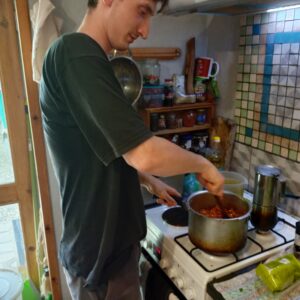
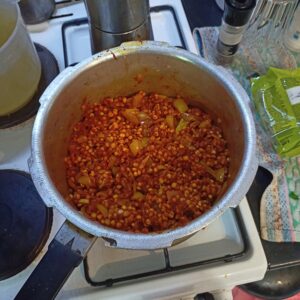
Anyway, enough about the event, I’m sure another volunteer will be telling you more about it in their blog post. I’ll now tell you a bit about some of the other things I got up to this week. Figs, as delicious as they are, aren’t always suitable for human consumption. I was devastated when I found out that the many figs from one of the trees in the garden are indeed one of the types that can’t be eaten. I did, however, proceed to pick them all from the tree, so they don’t drop off and attract insects. Around the other side of the house were some other things that needed picking, and this time they were going to be used in a meal instead of being thrown in the compost. The mint plants were thriving, so I had to pick some of them, take the leaves of the stems, discard any unsuitable leaves, and then lay them all out on a carboard tray so they can dry out and eventually be ground up.
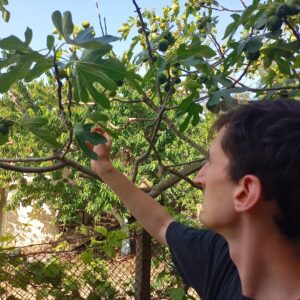
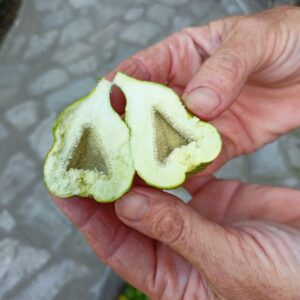
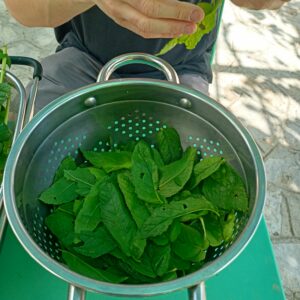
I’m also happy to inform you that the next stage of the beer brewing process began on Friday, the washing of the bottles! Since we did two 50 litre brews, we needed to retrieve 200 bottles from the cellar. We decided to use green bottles for the pale ale, and brown bottles from the red ale. Once we had all the bottles we needed, we set off to the other side of the village where there is a spring which is running 24/7 with hot thermal water, so it is a good, sustainable practice to take the bottles here to be washed. We plugged the basin with a big 2 litre bottle, so the water would stay in, and then proceeded to fill it with all the bottles. A few hours later, after getting completely soaked, we had our first batch of nice clean bottles ready to be filled with (hopefully) tasty beer! The whole process was repeated the next day with the second batch of bottles, so now we are all ready to take part in the final step, the bottling. This should be happening any day now, so in my next blog post the process will be complete, and who knows, I may have even tried one of the beers!
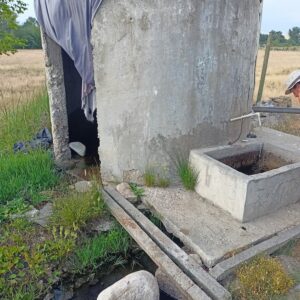
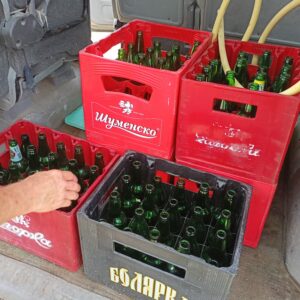
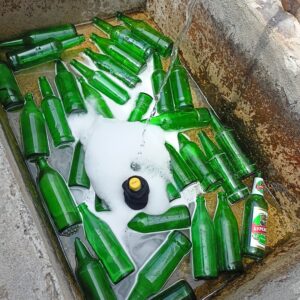
The last thing I have to report on is the start of a brand-new project building a summer kitchen for the campsite. The hosts’ thought this would be a good idea for a number of reasons. Firstly, to provide an outside kitchen area for campers, so they can conveniently prepare their own food. Secondly, it will increase the amount of shade in the garden, and also provide an opportunity for water gathering from the roof, and also from the sink and drain which will be built in the construction. This increased amount of water can be channelled underground to a location where the hosts will plant another tree, which will create even more shade, a necessity in the sweltering summer months. You can see the start that we made in the images included, stay tuned for the next blog post, where I will be updating you on all the projects mentioned 🙂
